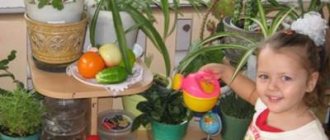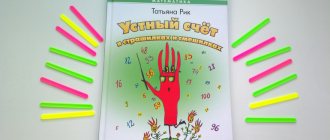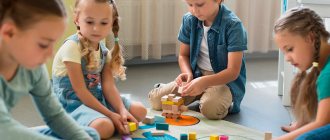Methodological recommendations for the preparation of group documentation; methodological development on the topic
Family social passport
Passport completion date______________________________
- Resides (underline and add full name, place of work):
- with parents;
- with mother or father;
- with a guardian, trustee;
- with stepfather, stepmother;
- in a foster family;
- in a government agency;
- with other family members;
- with strangers
_________________________________________________________________________________________________________________________________________________________________________________________________________________________________________________________________________________________________________________________________________________________________________________________________
Number of family members: _________________________________
- Actual address of residence of the family (child)
______________________________________________________________________________________________________________________________________________________________________________________________________________________________
- Living conditions: Separate apartment House
The apartment is rented, a dorm room.
No housing
- Social conditions (underline or add):
- favorable living conditions have been created,
- there are no conditions for education and recreation (the apartment is dirty, there is no bed linen, no furniture, no food, strangers are drunk),
- house, apartment or part thereof is rented
____________________________________________________________________________________________________________________________________________________________________________________________________________________________________________________________________________________________
- Social status of the family (underline or add):
- low-income,
- in a socially dangerous situation,
- full,
- large family,
- divorced,
- single mother,
- widow/widower,
- secondary marriage of mother/father,
- refugees,
- forced migrants ________________________________________________________________________________________________________________________________________________________________________________________________________________________________________________________________________________________________
- Parents' status (underline or add):
- disabled people (mother, father),
- limited rights (mother, father),
- deprived of parental rights (mother-father),
- unemployed (mother, father) _____________________________________________________________________________________________________________________________________________________________________________________________________________________
- Parents’ lifestyle (underline or add):
- abuse alcohol (mother, father),
- use drugs (mother, father);
- lead an antisocial lifestyle (mother, father);
- avoid raising children (mother, father);
- children are abused;
- are registered with the Department of Internal Affairs (mother, father),
- are registered with the KDN (mother, father);
- is in prison (mother, father, other family members);
- can't cope with education
- lead a secluded life,
- care for sick parents and disabled children;
- devote a lot of time to work (mother, father);
- take care of the child (mother, father) ___________________________________________________________________________________________________________________________________________________________________________________________________________________________________________________________________________________________________________________________________________________________________________________
- Number of children in the family
Children under 18 years of age (indicate name, date of birth, which preschool/educational institution they attend)
___________________________________________________________________________________________________________________________________________________________________________________________________________________________________________________________________________________________________________________________________________________________________________________________________________________________________________________________________________________________________________________________________________________________
- Family type (underline as appropriate):
- Prosperous (parents are morally stable, master the culture of education, the emotional atmosphere of the family is positive)
- Unfavorable, including:
A) pedagogically incompetent (parents do not have a culture of upbringing, signs: lack of unity of requirements, neglect, abuse, systematic punishment, low awareness of the child’s interests and behavior outside of school);
B) morally dysfunctional (parents lead an immoral lifestyle, drink alcohol, do not work anywhere, have a criminal record, and are not involved in raising children)
C) conflict (there is a dysfunctional emotional atmosphere in the family: there are constant conflicts between parents, parents are constantly irritable, cruel, intolerant)
- The nature of the relationship between parents and child (underline as appropriate):
- family dictatorship (systematic suppression of the child’s initiative and self-esteem);
- excessive care (satisfying all the child’s needs, protecting him from difficulties, worries and efforts);
- connivance (avoidance of active participation and passivity in raising a child, recognition of the child’s complete autonomy);
- cooperation (relationships of mutual respect, shared experiences of joy, grief, etc.)
- Family relationship style (underline as appropriate):
- conniving and condescending;
- all-round defense position;
- demonstrative;
- pedantically suspicious;
- exhorting;
- detached and indifferent;
- education according to the “idol in the family” type;
- inconsistent
- Organization of work and rest schedule.
- What responsibilities does the child perform in the family?
______________________________________________________________________________________________________________________________________________
- Does he follow a daily routine?
______________________________________________________________________________________________________________________________________________
- What do you do in your free time? ______________________________________________________________________________________________________________________________________________
MAGAZINE Preschooler.RF
Consultation for educators “Preparing documentation is one of the competencies of a teacher”In the work of a teacher, as in any other activity, order and planning are necessary. Only under these conditions is it possible to obtain satisfaction. It is no secret that paperwork is often given a secondary role. However, timely and correctly completed documentation can become our first assistant, because order in documentation, the ability to quickly find and analyze available materials will help the teacher in preparing for the new school year and teacher certification.
The teacher’s documentation includes the following sub-items:
- Mandatory documentation, which includes all documents related to the organization of the educational process.
- Information and regulatory documentation, this subclause includes all service and job descriptions, general information about the group, information about the methodological support of the educational process of the group.
Mandatory documentation.
- Working programm.
- Calendar plan for educational work,
- . Children's attendance sheet.
- Group passport.
Information and regulatory documentation of the teacher:
1. Service and job descriptions:
1. 1. Job description of a preschool teacher.
1. 2. Instructions for protecting the life and health of children in preschool educational institutions.
1. 3. Seasonal safety instructions for working on site.
- 4. Safety instructions when organizing classes on the physical education site.
- General information about the group:
- 1. List of children in the group (indicating the date of birth and date of admission to the preschool educational institution).
- 2. Group modes (for cold, warm, adaptation periods of the year).
- 3. GCD grid (main and additional classes in clubs).
- 4. Adaptation sheets (for newly admitted children).
- 5. Information about children and their parents.
- Methodological support of the educational process
- 1. The main areas of work and annual tasks of the MDOU for the current year.
- 2. List of programs and pedagogical technologies used by the teacher (compiled together with the senior teacher).
- 3. Long-term planning by program sections.
- 4. Materials for diagnostics for the main sections of the program.
- 5. Memos, advertising brochures for teachers based on the results of regional and city events (courses, seminars, methodological associations).
Let's try to consider the meaning of each document separately.
1. Group work program.
The teacher’s work program must be drawn up on the basis of the educational program of the preschool educational institution. It must be built in accordance with the age, psychological and individual characteristics of children.
Approximate structure of a teacher’s work program
- Title page (name, program status, program author)
- Explanatory note (concept, goals and objectives of the course, structure of the program and explanations to it, features of the program)
- Study load volume
- Calendar-thematic plan
- The content of educational material, including the federal and regional components of the state educational standard, provided for by the sample program
- System for monitoring children’s achievement of the planned results of mastering the program
- Bibliography
- Group calendar plan.
Technology for developing calendar plans
- The general algorithm is canvas.
- Start writing a plan with routine moments: morning; day; evening; for at least two weeks.
- The design of the plan must meet aesthetic requirements, since this is the calling card of the preschool educational institution.
- Take into account the ratio of children’s load: emotional; intellectual; physical.
- Consider the degree of complexity of the material.
- Compliance with software and methodological support.
- Include all activities.
- To trace the complication of techniques, not only visual and verbal, but also such as collective search, conversation, educational games.
2. 1. Algorithm for drawing up a teacher’s calendar plan.
- Title page
- List of children of the group, indicating the date of birth of the children.
For correctional groups (speech therapy, defectology), a list of children by subgroup, indicating the diagnosis of PMPC.
- GCD schedule for the week (according to the number of classes in the program and the requirements of sanitary and epidemiological rules and regulations 2.4. 1. 3049-13)
- Planning morning exercises (with changes for week 2)
- Complex of articulatory gymnastics.
- Finger gymnastics complex.
- Awakening gymnastics complex
- Plan for interaction with parents.
- Planning specially organized classes (indicating the day and date),
planning joint activities between the teacher and children,
planning children's independent activities.
3. Attendance report for children in the group.
An attendance sheet is necessary to record the number of children in the group daily. This helps ensure that children are fed and that classes are carried out smoothly (handouts for each child). Also, the attendance sheet helps the teacher and medical personnel track the incidence of children in a certain period.
4. Information about children and their parents.
In officially accepted practice, a special journal (notebook) usually contains the following information about the children attending the group:
- Last name, first name of the child
- Date of Birth
- Residence address and telephone numbers
- Full names of parents, grandparents
5. Log of reception and delivery of shifts.
This log indicates the reception and delivery of shifts by two teachers working in this group.
The log indicates the date and records the number of children that the teacher accepted into the group, and notes are made on the children’s health status (skin, temperature, lice). The teacher also makes notes about the changes that occurred in the group during the first half of the day (children going home, due to parents, child getting sick, etc.). The second teacher, who has taken up work and works in the afternoon, also makes a note in the journal about how many children he received, how the children slept, notes which children went home (healthy, or one of the children had a fever , injury could occur, etc.). All of the above should be reflected in the shift log.
6. Drinking regime log.
In accordance with the SanPiN regime, the drinking regime in preschool educational institutions is organized using boiled water, provided that it is stored for no more than 3 hours.
Therefore, the teacher must change the water in the carafe every next three hours (regardless of whether it has been used or not). The container is processed before each water intake, and the time of each water intake is recorded in the group’s drinking regime log.
7. Observation log for long-term absent children.
In preschool age groups, an observation log is kept for long-term absent children. Children who were absent after suffering from an illness, as well as absence for more than 3 days (except for weekends and holidays), are accepted into preschool organizations only if they have a certificate from a local pediatrician indicating the diagnosis and duration of the disease.
The magazine has a morning and evening filter, designed in the form of a table. In early age groups, a notebook is kept for daily observation of children, where morning and evening filters are noted (temperature, pharynx, skin, lice), as well as stool mesh (observation is carried out in the first and second half of the day).
8. Quartz journal.
The quartz log is necessary to track the implementation of preventive measures due to epidemiological outbreaks in the group.
The log records the date of quartzing, the presence of a quartzed room, disinfection conditions, duration and mode of irradiation.
9. Self-education magazine.
Society constantly makes demands on the education system. The teacher is obliged to get acquainted with innovations in a timely manner, replenish professional potential, improve pedagogical skills, using new educational technologies in practice. The teacher should keep a notebook on self-education, writing down in it the name of the literature studied, the title and author of the article that interested him, indicating the pages with the most significant information. Next, you should discuss the studied material with colleagues at a pedagogical meeting or teachers' council. When using innovations, it is necessary to purchase or produce teaching aids according to the author’s recommendations. those. present the practical application of the studied topic. The topic of self-education must correspond to the objectives of the preschool educational institution for the new academic year.
10. Individual child development map.
The purpose of the Card is to organize assistance to children and teachers in creating optimal learning conditions, taking into account individual characteristics based on a comprehensive diagnostic examination.
11. Monitoring.
The teacher should carry out diagnostics at the beginning, middle and end of the school year, which will give him the opportunity to compare the results of children’s assimilation of the program and timely correction of cognitive processes towards the child’s achievement of age norms.
All monitoring results are reflected in several documents;
- Sections for each educational area.
- A summary table dated by the date and month of the survey.
- Monitoring development level chart.
- Information certificate for the beginning of diagnosis and analytical certificate for the middle and end of the year.
Technology for compiling an Information Certificate.
- The general indicator of the level of mastery of program material is indicated, as well as what the percentage is equal to.
- The number of children, their percentage, is recorded for each level of development of mastering program material.
- The percentage of children is indicated (their last names and first names are written down) who, based on the results of the diagnostic examination, showed a low level of mastery of the program material.
- The supposed causes of this phenomenon are indicated.
- An analysis is made of the quality of children’s learning in sections of educational areas of the program for each level.
- The suspected cause of the low level is indicated.
- Conclusions are drawn.
- A comparative diagnostic result is carried out for the year in the form of a diagram (beginning of the year, middle, end of the year).
- It is indicated who compiled the certificate and signature.
- Kindergarten group passport.
A kindergarten group passport is a document that reflects the structure, conditions, content of the work of this group, as well as the most important indicators of its activities.
The kindergarten group passport is developed on the basis of the Group Regulations and reflects its focus (general developmental, compensatory, combined, health-improving).
Approximate contents of the group passport:
- Group (name, age, focus).
- Information about teachers working with children (full name, education, work experience, qualifications, information about course preparation).
- List of children with dates of birth.
- Information about parents.
- Social passport of the group.
(Includes information about the child’s full name, date of birth, parents’ full name, information about children from single-parent families, large families, children in care, children whose parents are disabled, families in in a socially dangerous situation, low-income families)
- Attendance sheet.
- Anthropometric data of the children in the group.
(An anthropometric study necessarily includes the measurement of basic anthropometric indicators (height, body weight, chest and head circumference. Anthropometric study is carried out 2 times a year. Spring - autumn)
- Nosology of the disease.
(The diagnoses of the children with whom they were admitted to the preschool educational institution are indicated, these are main, speech and accompanying)
- Children's health sheet.
Teachers work closely with the kindergarten medical staff. In practice, it is important to develop a differentiated approach to children, taking into account their health status. For this purpose, groups have so-called “Health Sheets” , which are filled out by medical personnel. As you know, for the formation of correct posture and the prevention of visual impairment, the correct seating of children at the table is of no small importance, for which a set of furniture is selected for each child. The height and weight of children are determined 2 times a year, respectively, a set of furniture should be determined 2 times a year.
The doctor distributes children into health groups.
According to the results of Prof. examinations (carried out 2 times a year in kindergarten groups and 4 times a year in early age groups), depending on the nature and severity of deviations in the children’s health, the doctor gives recommendations, recording them in documents. In the practical work of a teacher, it is the recommendations that are important, and not the clinical diagnosis (it is a medical secret). All of the above is reflected in the “Health Sheet” for each child.
- List of medical prescriptions.
The medical prescription sheet indicates the date, weight of the child, and health group.
In compensatory groups, the conclusion of a teacher - defectologist, or a teacher - speech therapist, the conclusion of a teacher - psychologist is included.
- Group equipment.
This document is drawn up in the form of a table, which indicates all the equipment of the group (furniture) and its quantity.
- The state of conditions for protecting the life and health of children in the group.
(In this document, the teacher notes the condition of the furniture, group premises, lighting, the condition of lesson aids, the condition of game materials, the selection of game materials, and a note is made about who checked all of the above. This check is carried out every week, throughout the year .Except for the time when the preschool is closed for scheduled repairs).
- The state of conditions for protecting the life and health of children in the group.
In this document, on a weekly basis, throughout the year, the condition of the group site, the fencing of the site, and the removed material are noted. The safety of the walk, the equipment of the site, and outdoor play material are noted. During the winter period, the area is icy. And a mark is placed on who carried out the control. (Head of preschool educational institution or deputy head of VOR.)
- Service and job descriptions:
- Job description of a teacher.
- Job description of a junior teacher.
- Occupational safety instructions for educators.
- Labor safety instructions for junior teachers.
- Instructions for the safety of sporting events, attractions, and outdoor games.
- Instruction No. 50 for the use of carbon dioxide fire extinguishers.
- The plan is an instruction that determines the actions of the staff of the MADOU kindergarten No. 1 to ensure the safe and quick evacuation of children in the event of a fire.
- Instructions for personnel actions in the event of a fire in the building.
- Operating instructions for the bactericidal irradiator OBN - 45OP.
- Teacher's instructions for preventing children's road injuries.
- First aid in case of accidents.
| Next > |







